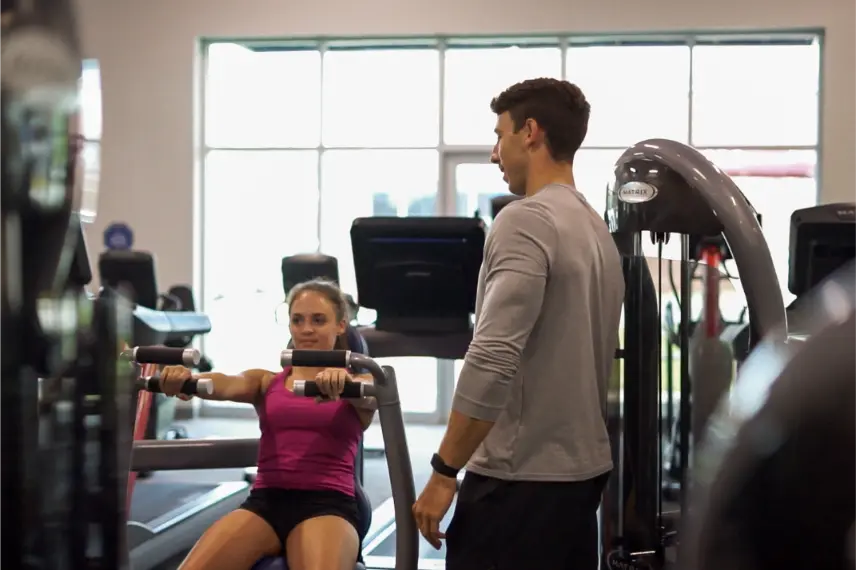We all know that a good mix of weight lifting and cardio forms the backbone of an effective fitness regime. These two elements are the rockstars of any workout. But let’s not forget about the silent hero in the background – mobility. This unassuming, often overlooked element can actually be the game-changer in your fitness journey.
Mobility training is like the secret sauce that adds a boost to your workouts. This routine that can be done in no time can enhance both your physical and physiological well-being. It helps improve your range of motion, reduces the risk of injury, and even contributes to better posture. So let’s see why you shouldn’t skip mobility training and how to actually do it.
What is mobility training?
If you are looking to be a well-rounded athletic person, then mobility training is a must-do. It’s not always about how much weight you can lift, or how fast you can run. Your body is a complex machine that requires balance and harmony to function at its best. That’s where mobility comes into play.
Mobility training is a holistic approach to fitness that focuses on improving your body’s range of motion. It’s about training your joints, muscles, and soft tissues to move more freely and efficiently. The core principle behind mobility training is to ensure your body can move through its natural range of motion without restriction or pain.
Mobility vs flexibility
Now, you might be thinking, “Isn’t that just flexibility?” Well, not exactly. While they are related, mobility and flexibility are two distinct concepts in fitness.
Flexibility is all about the ability of your muscles to stretch. It’s a passive movement that depends on your muscle’s length and how far it can stretch. Think of a gymnast performing a split – that’s flexibility at work.
On the other hand, mobility is an active movement. It’s about the ability of a joint to move through its full range of motion, with strength and control. It’s not just about stretching a muscle, but also about how well your joints and muscles work together to perform a movement.
For instance, being able to do a deep squat requires not just flexible muscles, but also good hip, knee, and ankle mobility.
So, while flexibility is a part of mobility, mobility offers a more comprehensive approach to body movement. It’s not just about stretching those muscles, but also about strengthening them and improving joint health.
Benefits of improved mobility
One of the best things about mobility training is the multitude of benefits it brings to the table. It’s like a gift that keeps on giving, and here’s why:
- Enhanced performance: Improved mobility can give your overall athletic performance a significant boost. Whether you’re lifting weights, cycling, running, or swimming, better mobility allows for a greater range of motion, helping you execute movements more efficiently and powerfully.
- Injury prevention: This is a big one, guys. A body that can move well is less likely to get injured. By improving joint health and muscle function, mobility training can help prevent common sports injuries.
- Improved posture: Office job got you slouching? Mobility training is the answer! By strengthening your muscles and improving joint function, you can correct postural imbalances and stand tall. Say goodbye to that office hunchback!
- Pain reduction: If you’re living with chronic pain, especially in your back or joints, mobility training could be a game changer. It could help alleviate pain by improving muscle function and joint health.
- Increased longevity: This is the long game. Good mobility can help you maintain an active lifestyle as you age. It’s not just about being fit now, it’s about staying fit for life.
- Better quality of life: This one’s a no-brainer. A body that moves well is a body that lives well. From carrying groceries to playing with your kids, improved mobility can enhance your daily life in countless ways.
How to incorporate mobility training into your routine?
Incorporating mobility training into your fitness routine might seem like a daunting task, but it’s easier than you think. Here are some simple steps to get you started:
- Start with a warm-up: One of the best times to work on mobility is during your warm-up. Begin your workout with dynamic stretches that move your joints through their full range of motion. Think arm circles, leg swings, and hip circles. This not only prepares your body for the workout ahead but also helps improve your mobility over time.
- Incorporate mobility exercises: There are countless mobility exercises out there, targeting every part of the body. From hip openers to shoulder mobility drills, find exercises that target your specific needs. You can add these exercises to your workout routine, or even do them during your downtime while watching TV.
- Consistency is key: Like any other aspect of fitness, consistency is crucial when it comes to mobility training. Make it a part of your daily routine and stick to it. Your body won’t change overnight, but with time, you’ll see improvements.
- Consider hiring a professional: If you’re new to mobility training, it might be beneficial to work with a personal trainer, at least in the beginning. They can help you understand your body’s specific needs and guide you through the exercises correctly.
Adding mobility training to your routine doesn’t have to be complicated. It’s all about making small, consistent efforts to move better.
Below is a video with a 30-minute full body corrective exercise you can use for mobility improvement.
How often should you do a mobility workout?
The answer is simple – aim for a little every day. Unlike strength training, where you need to allow your muscles time to recover, mobility exercises can be done daily. You don’t need to spend hours on it – even just 10-15 minutes dedicated to mobility work can make a significant difference.
How soon can you see progress?
Progress may not be as immediate or drastic as with other types of training. But don’t let that discourage you! Typically, with consistent daily practice, you may start noticing improvements in your mobility within 4-6 weeks. You’ll find your movements becoming smoother, your range of motion improving, and those pesky aches and pains reducing.
Final thoughts
Mobility training is an essential part of a well-rounded fitness routine that often gets overlooked. It’s about more than just being flexible – it’s about moving better, performing better, and living better. From boosting your athletic performance to preventing injuries, the benefits are far-reaching.
Adding mobility work to your routine doesn’t have to be a chore. Whether it’s during your morning routine, a break from your desk, or while watching your favorite TV show, there are plenty of opportunities to get moving.





